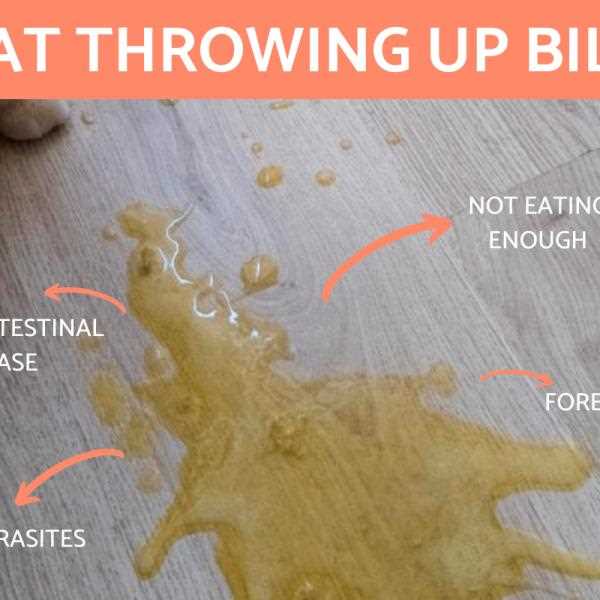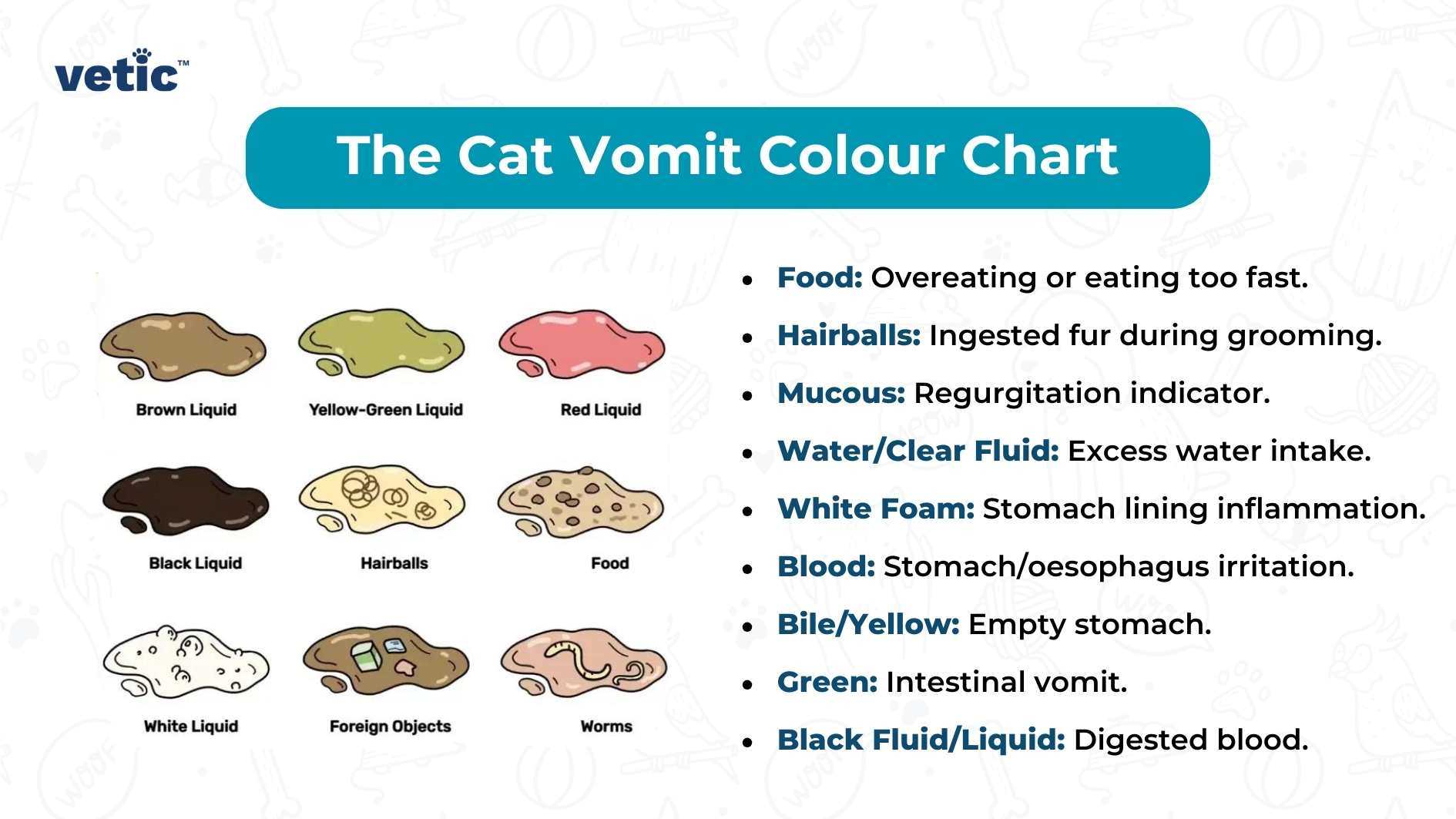



While I’m not feeling my best right now, there are a few things I want to share. If you notice any similar symptoms, it’s crucial to seek veterinary assistance. My condition could indicate an upset tummy or something more serious, like a blockage or underlying illness.
It’s important to monitor any signs of distress. If there’s a change in behavior or appetite, you might want to consider the potential causes. Dietary changes, stress, or even hairballs can contribute to discomfort. Also, dehydration is a concern, so ensure fresh water is always available.
Pay attention to the frequency of these episodes. If they persist, it’s wise to consult with a professional. Sometimes, blood tests or imaging might be necessary to identify the issue. Your health and happiness are paramount, so don’t hesitate to act if something seems off.
Understanding the Causes of Yellow Vomit in Cats
It’s crucial to recognize that my discomfort often stems from various underlying issues. When I expel a bile-like substance, it can indicate several health concerns. One common reason is an empty stomach. Without food, my digestive juices accumulate, leading to irritation and resulting in this unpleasant experience. Keeping a regular feeding schedule helps prevent this.
Another possibility involves dietary indiscretion. Consuming something unusual or unsuitable can upset my stomach and trigger this reaction. Always ensure that what I nibble on is safe and appropriate for my kind.
Health Problems to Consider
Conditions affecting the liver or pancreas may also be at play. These organs are vital for digestion, and any dysfunction can manifest as digestive issues. If I show signs of lethargy, jaundice, or changes in behavior, it’s important to seek veterinary assistance promptly.
Stress and Anxiety Impact
Environmental factors can contribute too. Stressful situations, such as changes in my surroundings or routine, can disrupt my eating habits and digestive process. Creating a calm, stable environment is essential for my well-being.
Signs of Dehydration and When to Be Concerned
Observe for dry gums and increased thirst. If my mouth feels parched and sticky, it’s a red flag. In addition, pay attention to skin elasticity; gently pinch the skin and see if it returns quickly or remains elevated. A slow return is a sign of insufficient fluids.
Monitor behavior closely. Signs of lethargy or unresponsiveness are cause for alarm. If I’m less active than usual or show no interest in play, it may indicate an underlying issue. Check my eyes for dullness; bright, alert eyes are a sign of good health.
Watch for changes in urination frequency. If I’m going less often or producing smaller amounts, it’s time to take action. Increased heart rate and rapid breathing are other concerning indicators. If my breathing feels labored or my heart seems to race, seek veterinary assistance immediately.
| Signs of Dehydration | Actions to Take |
|---|---|
| Dry gums | Consult a vet |
| Poor skin elasticity | Provide fluids |
| Lethargy | Visit the doctor |
| Dull eyes | Increase water intake |
| Reduced urination | Immediate vet check |
| Increased heart rate | Seek emergency care |
Act swiftly if these signs appear; timely intervention can make a significant difference in recovery. Staying hydrated is key to overall well-being, and I rely on my human to monitor these signs closely.
Common Gastrointestinal Issues in Cats
Regularly monitor for changes in behavior or digestion. If you notice discomfort, it may indicate underlying gastrointestinal problems. Hairballs, dietary indiscretion, or infections can lead to distress. Ensure a balanced diet, avoiding sudden changes to prevent upset. Always provide fresh water to encourage hydration.
In cases of persistent distress, consider the possibility of parasites or inflammatory bowel disease. Regular veterinary check-ups can help detect these issues early. If symptoms persist, don’t hesitate to seek professional advice.
Maintaining a clean eating environment and ensuring proper storage of food can also help prevent gastrointestinal disturbances. For those who love Maine Coons, make sure to choose the best names for maine coon cats that fit their personality, as stress can influence their overall health.
Lastly, observing litter box habits is crucial. Changes in frequency or consistency can provide insight into health status. Stay informed and proactive in caring for your furry friend.
Dietary Changes and Their Impact on Feline Health
Switching to new food can create significant changes in well-being. It’s crucial to transition gradually over a week to prevent digestive issues. Start with a mix of 75% old food and 25% new, progressively adjusting the ratio.
Choosing the Right Ingredients
Look for high-quality protein sources and avoid fillers like corn or soy. Ingredients should be easily digestible, promoting a healthy gut. Also, consider specific dietary needs based on age, weight, and any underlying health conditions.
Monitoring Reactions
After any alteration in diet, watch for signs of discomfort or adverse reactions, such as lethargy or changes in bathroom habits. If any troubling symptoms arise, consult a veterinarian promptly. Staying attuned to individual responses can guide future dietary decisions effectively.
Hydration is another key factor; always ensure fresh water is available. Some foods may require additional moisture to keep hydration levels optimal. Regular assessments of eating habits and overall behavior help maintain a balanced approach to nutrition.
When to Consult a Veterinarian for Your Feline’s Symptoms
If your furry friend exhibits persistent discomfort, immediate action is necessary. Monitor closely for signs that indicate a need for professional evaluation.
Key Indicators for Seeking Veterinary Help

- Persistent distress lasting more than 24 hours.
- Signs of dehydration: dry gums, excessive thirst, or lethargy.
- Weight loss or refusal to consume food for over a day.
- Abdominal swelling or sensitivity upon touch.
- Unusual behavioral changes, such as hiding or aggression.
Situations Requiring Immediate Attention

- Continuous retching without expelling anything.
- Presence of blood in the expelled matter.
- Severe abdominal pain, indicated by vocalization or distress.
- Exposure to potentially toxic substances or plants.
- Signs of an allergic reaction, including swelling or difficulty breathing.
For any of these scenarios, contacting a veterinary professional is essential. Early intervention can significantly improve outcomes and ensure the well-being of your beloved companion. If you’re curious about meal preparation, check out this guide on cooking hamburger patties in a cast iron skillet for inspiration while caring for your pet.








